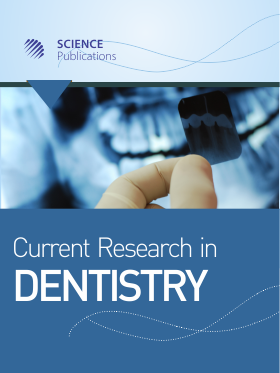Influence of Orthodontic Movement by Bracketless Orthodontic Treatment on Stress Distribution: 3D Finite Element Analysis
- 1 University of Sete Lagoas (FACSETE), Brazil
- 2 Centro Universitário Tiradentes (UNIT), Brazil
- 3 University of Taubaté (UNITAU), Brazil
- 4 Faculdade São Leopoldo Mandic, Brazil
Abstract
The Bracketless Orthodontic Treatment (BOT) is an alternative technique with the concept of installing an orthodontic appliance composed only of wires and composite resin with the aid of 3D technology. However, the biomechanical behavior of this therapeutic modality has yet to be elucidated in the scientific literature. Thus, the objective of this study was to evaluate the stress distribution in tooth movement through 3D Finite Element Analysis (3D FEA) using different displacements (0.15, 0.25 and 0.35 mm) and wire thicknesses (0.012”, 0.014” and 0.016”) of nickel-titanium wire (NiTi) with BOT. Thus, 3D modeling of a complex structure composed by enamel, dentin, cortical bone, medullary bone, periodontal ligament, composite resin and different orthodontic wire diameters was performed. After modeling, the set was exported to computer-aided engineering software, subdivided into a finite number of elements and a mechanical structural static analysis was subsequently performed. The results were plotted on colorimetric charts for qualitative comparison and the stress peaks on tables for quantitative comparison between the different models. The results showed that orthodontic movement with BOT does not induce damage to the periodontal ligament, dental root or bone tissue, regardless of the simulated orthodontic wire diameter and applied load. The occlusal composite resin and orthodontic wire also presented acceptable stress values during orthodontic activation. Thus, the Bracketless Orthodontic Treatment technique presents a promising biomechanical response during tooth movement with a low risk of damage.
DOI: https://doi.org/10.3844/crdsp.2021.48.61

- 9,510 Views
- 3,865 Downloads
- 6 Citations
Download
Keywords
- Biomechanics
- Orthodontics
- Finite Element Analysis
- Orthodontic Brackets
